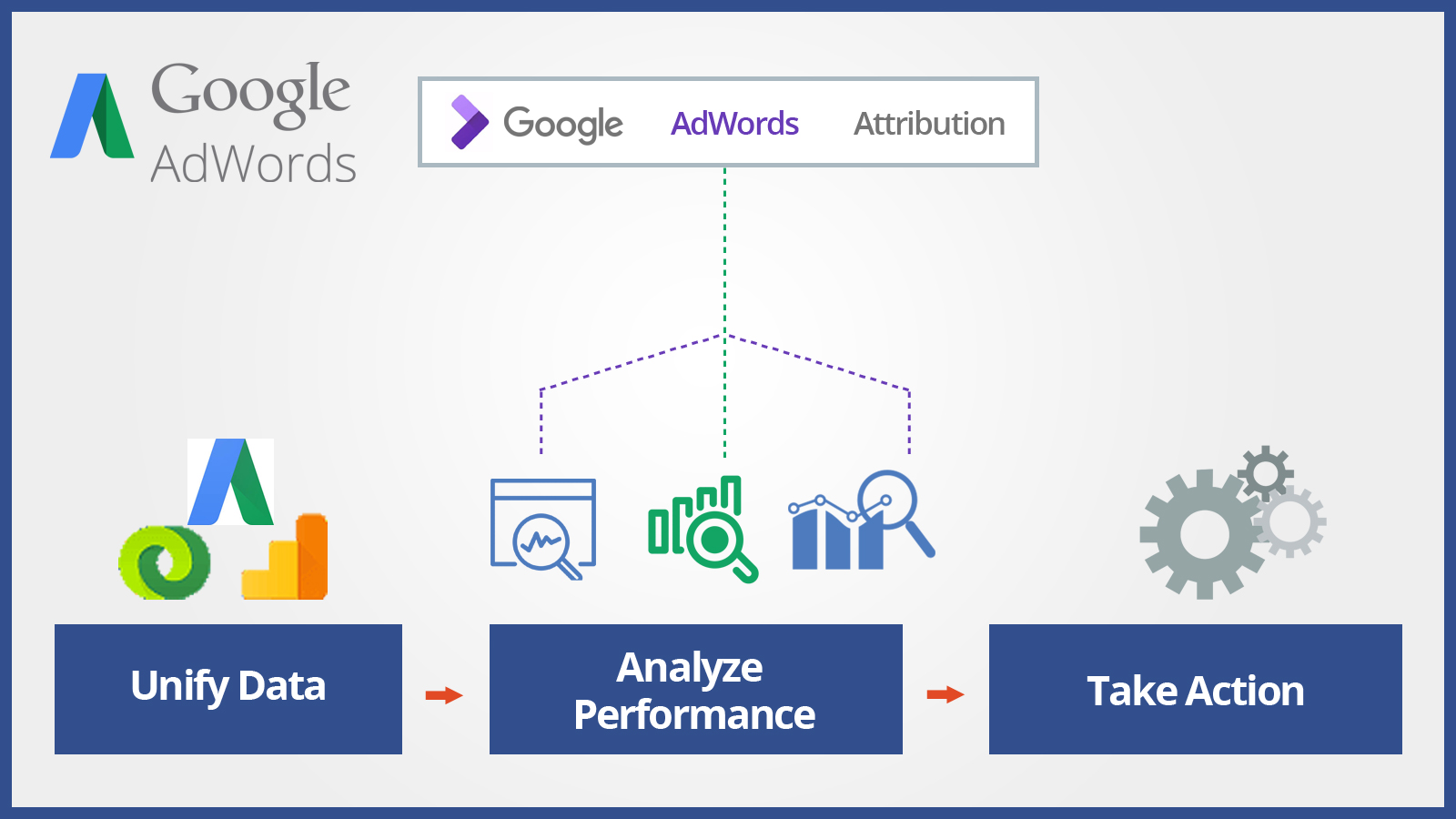 Adwords attribution modeling is how Google assigns conversion credits to keywords, ad groups, campaigns or product groups. The attribution model you use for your PPC advertising dictates which campaigns, ads or ad groups get credit for your conversion. Your prospects engage with your business through multitude of channels before finally converting, and you need to be aware of how much value each channel deserves.
Adwords attribution modeling is how Google assigns conversion credits to keywords, ad groups, campaigns or product groups. The attribution model you use for your PPC advertising dictates which campaigns, ads or ad groups get credit for your conversion. Your prospects engage with your business through multitude of channels before finally converting, and you need to be aware of how much value each channel deserves.
In the digitalized marketing landscape, there can be a wide variety of attribution models that business managers employ to figure out which marketing channel deserves credit for what. Attribution modeling is important for marketing efforts of a business as people often do searches on smart phones before making purchases using a secondary device like tablet, laptop or desktop. Attribution model helps you figure out which keywords or product groups actually lead to conversion. You may ultimately find out that the keywords responsible for conversion are quite different, and you may have to optimize strategy differently for each model.
We will go through six different attribution models that exist within Google Adwords that a digital marketing company needs to take note of to get the most out of its marketing spends.
1- Last click attribution model
It’s the default attribution model for every new Adwords campaign that you create, and as such is probably the most used one as well. Google assigns 100% credit to the very last touch point. For example, if you search Google for “Tax attorney California”, you click an ad from Sacramento Tax Attorney Services and you didn’t convert. Then you go back to Google, search for “Sacramento tax attorney”, click an ad from Sacramento Tax Attorney Services. In this case, Google will assign 100% credit to the keyword “Sacramento tax attorney”. The keyword that directly leads to conversion gets 100% credit.
This model provides due credit to brand names. In reality, until your brand isn’t super-strong, most people wouldn’t search it right away. It doesn’t take into account how the people in real world situations actually search. There could be multiple keywords along the way that eventually lead to conversion. It gives full credit to the last click.
2- First click attribution model
It is opposite of Last Click model. The model provides 100% credit to the first touch point. In our above example, the very first search term “Tax attorney California” would get all the credit. The model helps you see how top of funnel ((TOFU) keywords lead to conversions. If a customer clicks two of your ads, Adwords will credit conversion to the first ad.
As TOFU terms are generally the beginning of a customer’s journey, you have no idea of the multiple touch points that the customer hits before converting. Optimizing on something vague could drain on your valuable investments.
3- Position based attribution
Also known as U-shape attribution model, it offers a blend of Last Click and First Click models. It provides 40% credit to the first click, 40% to the last one and the intervening clicks get 20%, spread out evenly. The advantage of this model is that it will let you see every single keyword that led to eventual conversion. This way, marketers can decide upon if a keyword is worth investing or not. While the model gives credit to the first and last clicks, on the contrary, middle touch points may ultimately have led to the conversion.
4- Linear attribution model
Like position attribution model, linear attribution model considers all touch points when looking at a conversion. The big difference between the two is that in a linear model, all touch points are credited equally. With every touch point given equal credit, you needn’t focus too much on brand terms.
As the model assigns equal credit to every single touch point; it may lead you to focus on a broad spectrum of terms that do not matter, while not investing sufficiently on the terms that actually matter.
5- Time delay attribution model
The last touch point is given majority of the credit for a conversion while all other touch points leading up the conversion are also given some credit. The further back a touch point is, the lesser credit it receives. You can think of time delay model as an upgraded version of Last Click attribution model. The advantage of this model is that it takes into consideration all the other touch points that lead to the conversion.
It takes into account all the touch points before the last click, but the last click may still be too much credited, leading to an inflation of credit on brand terms.
6- Data driven attribution model
With this fairly new model, Google actually analyzes your conversion data and determines about the distribution of credit between each touch point. There are no set rules about the credit to be given to each touch point. The model is based on Google’s own artificial intelligence and your data, so the model looks completely different for each advertiser. Data driven attribution model theoretically solves the problems of 5 models discussed above. No touch point will be ignored or given undue credit, and Google claims that all touch points that lead to conversion will receive correct amount of credit. So, the marketers could be sure of where to invest the money and where not.
The model works best for larger accounts. You may need around 15,000 clicks and 600 conversions in a month, which is not an easy number to hit if you’re a smaller advertiser. So, theoretically while any advertiser can use data driven model, due to the requirement of data, larger advertisers will be able to make use of it.
Which attribution model to use?
The answer depends on your business model and entrepreneurial goal because each model has its valid uses, depending upon the individual use cases. Though Last Click is the default attribution model, it is not always the best one to go. When available, Data Driven attribution model could be the right option. Google AI empowered algorithms analyze thousands of signals to identify the impact of each click on the final conversion.
If you are not a larger advertiser and do not have enough data to effectively leverage data-driven attribution, the next best model could be Time-Delay because quite unlike the First and Last click, it assigns some conversion value to every click. Unlike Linear Model, it doesn’t provide equal credit to each click. And contrary to Position-based, it assumes that closer a click was to the time of conversion, more impact it had on the conversion.
Smarter attribution modeling leads to better ROI
Here, we have looked at the attributions within Google search. Things can get a lot hairier if you look at the attribution between different marketing channels. If you cut your budget on broad keywords that don’t seem to be driving conversions but those keywords are actually driving the initial awareness for conversion through a branded ad, you are going to limit your profits. If you limit your bids on mobiles as you thought that your desktop conversions are way too better, but those desktop conversions are actually coming from the people who found you on their mobile phones first, you are probably going to lose many potential sales.
A smart distribution model means a smart allocation of your adverting budget. Using the right attribution model will help improve your ROI.


 Pankaj
Pankaj

